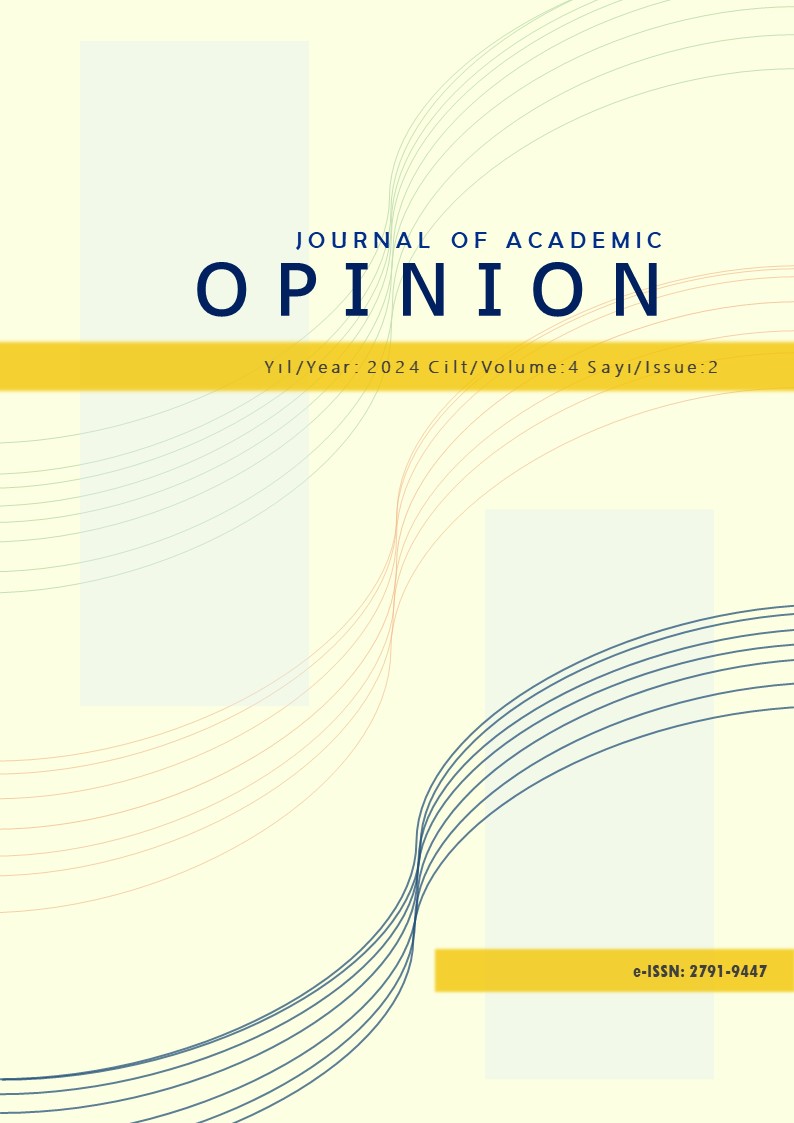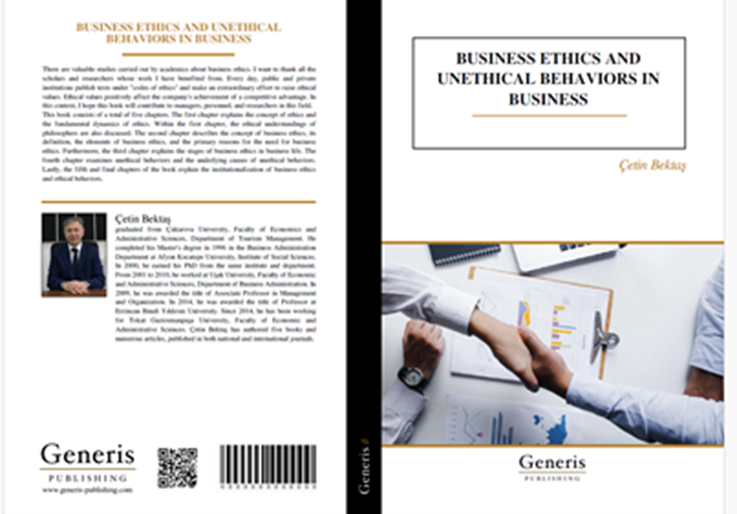Analysis of Türkiye’s Macroeconomic Performance for the Period 2000–2023 with Multi–Criteria Decision Making Approach
Keywords:
Macroeconomic Performance, Multi-Criteria Decision Making, Türkiye, TOPSIS, COPRASAbstract
The main purpose of this study is to evaluate Türkiye's macroeconomic performance for the period 2000–2023. Various criteria have been determined for performance analysis and these criteria are economic growth, unemployment rate, inflation rate and current account balance. In the study, performance analysis was performed using TOPSIS and COPRAS techniques, which are multi-criteria decision-making methods, with a 24 year alternative and 4 economic indicator criteria. As a result of the analysis, the performance order of the years was determined according to TOPSIS and COPRAS techniques. It was determined that the years in which Türkiye showed the highest and lowest performance were similar in both methods. Although there were slight changes in the rankings according to the methods, the years in which Türkiye's macroeconomic performance was the highest were 2004, 2005 and 2015, and the years in which macroeconomic performance was the lowest were 2001, 2022 and 2023. In the years in which performance was higher, high economic growth and low inflation were the determinants, and in the years in which performance was lower, high inflation and current account deficit were the determinants. The large increase in inflation rates, especially in 2001, 2022 and 2023, has negatively affected economic performance. These results show that inflation has a significant impact on Türkiye's macroeconomic performance. The economic crisis experienced in Türkiye in 2001, the COVID-19 global pandemic, which continues to have economic effects in the world and in Türkiye, and the low interest rate policy implemented in Türkiye are the most important features of 2022 and 2023.
References
Al, İ. ve Demirel, S. K. (2022). Türkiye’nin Makroekonomik Performansının TOPSIS Yöntemiyle Değerlendirilmesi: 2002–2019 Dönemi. Mehmet Akif Ersoy Üniversitesi İktisadi ve İdari Bilimler Fakültesi Dergisi, 9(1): 202–222. https://doi.org/10.30798/makuiibf.860476
Altay Topçu, B. ve Oralhan, B. (2017). Türkiye ve OECD Ülkeleri’nin Temel Makroekonomik Göstergeler Açısından Çok Kriterli Karar Verme Yöntemleri ile Karşılaştırılması. International Journal of Academic Value Studies, 3(14): 260–277. http://doi.org/10.23929/javs.304
Arslan, H. M. (2023). Türkiye Ekonomisinin Çok Kriterli Karar Verme Yöntemleri ile Değerlendirilmesi. Süleyman Demirel Üniversitesi Vizyoner Dergisi, 14(100. Yıl Özel Sayısı): 26–43. https://doi.org/10.21076/vizyoner.1300286
Behzadian, M., Otaghsara, S. K., Yazdani, M., and Ignatius, J. (2012). A State–of the¬-Art Survey of TOPSIS Applications. Expert Systems with applications, 39(17): 13051–13069. https://doi.org/10.1016/j.eswa.2012.05.056
Benlialper, A., Cömert, H. ve Düzçay, G. (2016). 2002 Sonrası Türkiye Ekonomisinin Performansı: Karşılaştırmalı Bir Analiz. ODTÜ Gelişme Dergisi, 43(1): 65–110. https://hdl.handle.net/11511/58205
Chakraborty, S. (2022). TOPSIS and Modified TOPSIS: A Comparative Analysis. Decision Analytics Journal, 2: 100021. https://doi.org/10.1016/j.dajour.2021.100021
Ekren, N. ve Fındıkçı, M. (2016). AHP ve VIKOR Yöntemleri ile Avrupa Birliği’ne Üye Ülkeler ve Türkiye'nin Ekonomik Performanslarının Değerlendirilmesi. İstanbul Ticaret Üniversitesi Sosyal Bilimler Dergisi, 15(29): 1–17. https://hdl.handle.net/11467/1383
Ela, M., Doğan, A. ve Uçar, O. (2018). Avrupa Birliği Ülkeleri ve Türkiye’nin Makroekonomik Performanslarının TOPSIS Yöntemi ile Karşılaştırılması. Osmaniye Korkut Ata Üniversitesi İktisadi ve İdari Bilimler Fakültesi Dergisi, 2(2): 129–143. https://dergipark.org.tr/tr/pub/oskauiibfd/issue/42203/422970
Eleren, A. ve Karagül, M. (2008). 1986–2006 Türkiye Ekonomisinin Performans Değerlendirmesi. Yönetim ve Ekonomi Dergisi, 15(1): 1–14. https://dergipark.org.tr/tr/pub/yonveek/issue/13688/165655
Eyüboğlu, K. (2017). Türk Dünyasında Yer Alan Ülkelerin Makro Performanslarının Karşılaştırılması. Bilig, 83: 331–350. https://dergipark.org.tr/tr/pub/bilig/issue/42612/519426
Kandemir, A. ve Özarı, Ç. (2019). Türkiye Avrupa Birliği Ekonomik Performans Karşılaştırması (2007–2017): TOPSIS–EDAS Uygulaması. Sosyal Bilimler Dergisi, 6(38): 456–479. http://doi.org/10.16990/sobider.5100
Kaya Samut, P. (2024). Türkiye Cumhuriyeti’nin 100 Yılının Ekonomik Değerlendirmesi ve Çok Kriterli Karar Verme ile Ekonomik Performans Analizi. Optimum Ekonomi ve Yönetim Bilimleri Dergisi, 11(2): 265–286. https://doi.org/10.17541/optimum.1398268
Kete, H. ve Karasaç, F. (2022). Covid–19 Sürecinde Avrupa Birliği Ülkeleri ve Türkiye’nin Ekonomik Performanslarının COPRAS Yöntemi ile Değerlendirilmesi. İktisat Politikası Araştırmaları Dergisi, 9(2): 373–395. https://doi.org/10.26650/jepr1063962
Oğuz, S., Çetiner, Ö. ve Yalçıntaş, D. (2020). Avrupa Birliği’ne Aday ve Potansiyel Aday Ülkelerin Ekonomik Göstergelerinin TOPSIS Yöntemi ile Değerlendirilmesi. Çağ Üniversitesi Sosyal Bilimler Dergisi, 17(2): 17–28. https://dergipark.org.tr/tr/pub/cagsbd/issue/58680/816707
Özden, Ü. H. (2012). AB’ye Üye Ülkelerin ve Türkiye’nin Ekonomik Performanslarına Göre VIKOR Yöntemi ile Sıralanması. İstanbul Ticaret Üniversitesi Sosyal Bilimler Dergisi, 11(21): 455–468. https://hdl.handle.net/11467/660
Podvezko, V. (2011). The Comparative Analysis of MCDA Methods SAW and COPRAS. Engineering Economics, 22(2): 134–146. http://doi.org/10.5755/j01.ee.22.2.310
Sevgin, H. ve Kundakcı, N. (2017). TOPSIS ve MOORA Yöntemleri ile Avrupa Birliği’ne Üye Olan Ülkelerin ve Türkiye’nin Ekonomik Göstergelere Göre Sıralanması. Anadolu Üniversitesi Sosyal Bilimler Dergisi, 17(3): 87–108. https://doi.org/10.18037/ausbd.417281
T.C. Hazine ve Maliye Bakanlığı. Ekonomik Göstergeler. https://hmb.gov.tr/ekonomik-gostergeler
Türkiye Cumhuriyet Merkez Bankası. Elektronik Veri Dağıtım Sistemi. https://evds2.tcmb.gov.tr/
Türkiye İstatistik Kurumu. İstatistik Veri Portalı. https://data.tuik.gov.tr/
Urfalıoğlu, F. ve Genç, T. (2013). Çok Kriterli Karar Verme Teknikleri ile Türkiye’nin Ekonomik Performansının Avrupa Birliği Üye Ülkeleri ile Karşılaştırılması. Marmara Üniversitesi İktisadi ve İdari Bilimler Dergisi, 35(2): 329–360. https://doi.org/10.14780/iibdergi.201324469
Yüzbaşı Künç, G. ve Atılgan Yaşa, A. (2019). Türkiye—OECD Ülkelerine Ait Bütçe Göstergelerinin TOPSIS ve VIKOR Yöntemleri ile Karşılaştırılması. Bitlis Eren Üniversitesi Sosyal Bilimler Dergisi, 8(2): 366–384. https://dergipark.org.tr/tr/pub/bitlissos/issue/51576/616169
Zavadskas, E. K. and Kaklauskas, A. (1996). Pastatų Sistemotechninis Įvertinimas (Multicriteria Evaluation of Building). Vilnius: Technika.
Zhang, X., Wang, C., Li, E., and Xu, C. (2014). Assessment Model of Ecoenvironmental Vulnerability Based on Improved Entropy Weight Method. The Scientific World Journal, 2014(1): 797814. https://doi.org/10.1155/2014/797814
Downloads
Published
How to Cite
Issue
Section
License
Copyright (c) 2024 Journal of Academic Opinion

This work is licensed under a Creative Commons Attribution 4.0 International License.





